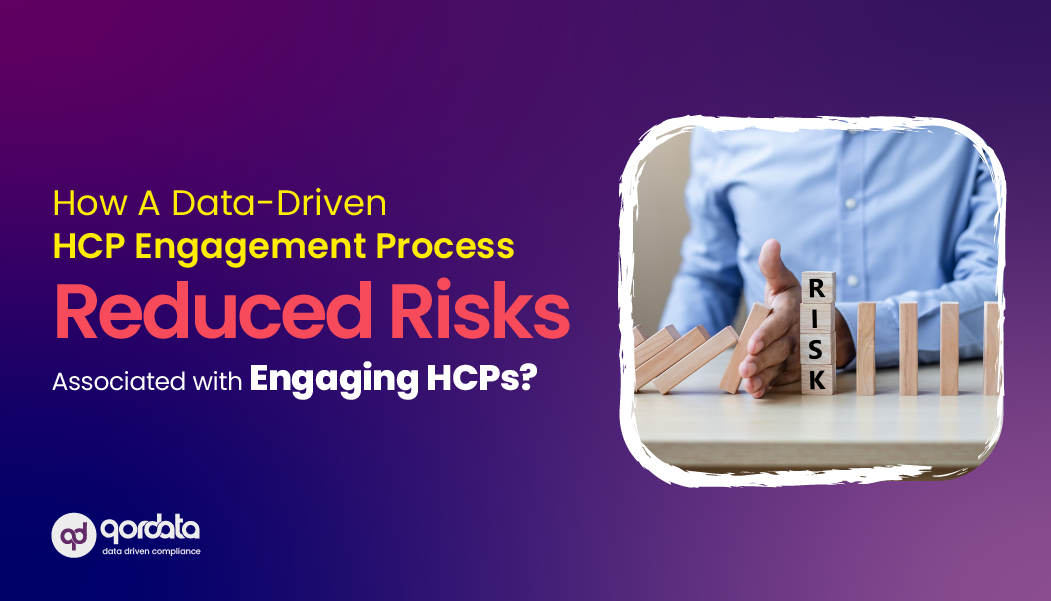Table of Contents
ToggleThe U.S Department of Justice (DOJ) updated its compliance program evaluation guideline outlining exactly how it evaluates corporate compliance programs.
The new guidance instructed prosecutors to ask life sciences companies’ compliance teams whether they have data sources for timely, effective, and efficient monitoring and whether they are continuously testing and updating policies, controls, and transactions.
The guidance also asked prosecutors to determine whether an organization’s compliance program is designed to function effectively and whether they’re empowered with the appropriate resources.
Although several life sciences companies have been leveraging data-driven compliance programs before this guidance was ever revealed, after the guidance, DOJ has made it clear that organizations that don’t have a data-driven compliance program or one designed according to the evaluation criteria highlighted by DOJ could face legal consequences for being laggards.
As a compliance leader, your top priority is building a data-driven compliance program. So, today, you’ll learn about the primary aspects that DOJ focuses on in this article and consider making your existing compliance program data-driven or contemplate building one.
Lead Your Compliance Program with a Data-Scientist Mindset
The new generation of compliance is different and what used to work a few years ago will not work now. For starters, traditional compliance programs were handled by lawyers and other legal professionals.
In fact, compliance programs were considered legal functions earlier. Although this classic model was effective for a brief period, it missed the operational element critical for a compliance program because DOJ has prioritized it.
The modern approach advised by the DOJ advises life sciences companies to shift focus from considering lawyers as compliance professionals who exclusively leverage a legal approach to enable an organization to meet the stringent compliance demands.
Expanding the roles of lawyers is the way forward now, and this is where the data scientist mindset enters the fray. Adapting to the modern approach directed by DOJ, lawyers must understand the following to approach compliance in a DOJ-friendly way:
- Understanding data analytics and company operations to strengthen decision-making and compliance programs
- Build processes and procedures that ensure efficient collection and storage of data
- Create a centralized data repository where the data is safely stored
Moreover, legal guidance is an integral part of a compliance program. Hence, lawyers are important. However, it is recommended that compliance professionals should lead the compliance function with this data-scientist mindset.
Collaboration can be formed between legal and compliance teams, enabling both parties to analyze compliance data, understand legal requirements, and ensure compliance throughout the organization.
Finding the Data Your Compliance Program Needs
The data itself is the most critical element required for monitoring and analysis and ensuring the creation of a data-driven compliance platform. Unfortunately, drug and device manufacturers overlook the data present within their organization.
Therefore, the first step towards building a data-driven compliance program is to realize that the data you need and the data that should be flowing into a centralized data repository are already present within the organization.
For instance, take a look at your company’s enterprise resource planning (ERP) system. You’ll notice that it is packed with data and information relevant to a company’s compliance with government rules and regulations.
Once you start monitoring and analyzing this data and the data from other sources, i.e., CRM solution, the magic happens, and your compliance program transforms into a proactive and reactive operation that, instead of blindly monitoring activities, specifically flags business-critical risks and problems.
Potential Use Case of a Data-Driven Compliance Program
Let’s assume that a life science organization uses a speaker program to boost sales. It would take significant time and cost for a company to manually monitor this program to identify warning signs, such as doctors attending the same presentation and multiple meals for the same doctor over multiple months.
However, with an automated and data-driven solution, information regarding expenses, breaching meal limits, sign-in sheets, and other relevant data would be accessible by the compliance teams enabling them to quickly flag risks and plan remediations.
In a nutshell, a data-driven compliance program would save you the time, effort, and money required to ensure compliance and mitigate compliance risks effectively and efficiently.
Next Steps?
The revised guidance of the DOJ provides a blueprint for pharmaceutical and life sciences companies to build an effective and data-driven compliance program.
The major benefits of building a data-driven compliance function are clear, and when DOJ investigates the data-driven compliance program of a pharmaceutical company, it’s implied that they’ll find their expectations met because the company would now have resources that will provide them with access to data that they can monitor, analyze, review and test to make their compliance programs better and more effective.
Furthermore, qordata‘s data-driven compliance platform offers all the imperative features and functionalities that life sciences need to ensure that their data is collected immediately.
Through our data-driven compliance solutions, life sciences can embrace data-driven change and experience what a data-driven approach to compliance feels like.
Other Relevant Reads:



